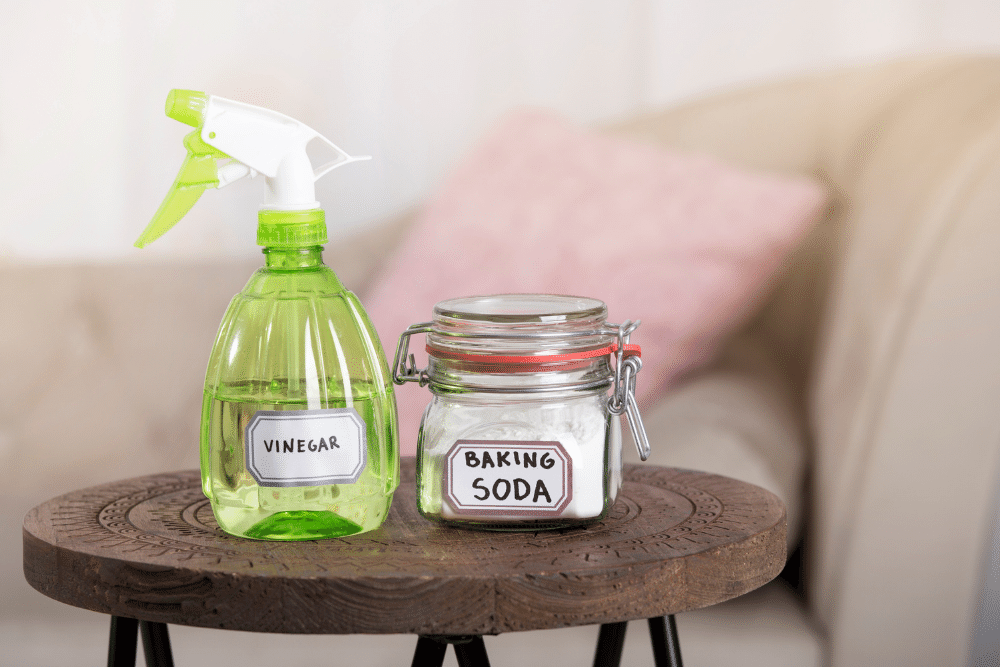They’re biters and suckers and all-around annoying, itch-inducing, disease-spreading opportunists. They come for blood, and dogs are covered in cozy hiding spots for their clandestine dining. They also overstay their welcome if not forced to leave. But what’s the best way to evacuate fleas and ticks on Fido? Do you have to engage in chemical warfare, or are DIY flea and tick remedies just as effective?
Dogs are family. And Americans spend tens of billions of dollars a year making sure they know it.
So, when it comes to the best flea and tick prevention for dogs, we’re not looking to skimp because of cost. We simply want the safest and most effective solution to what can be a nasty problem with nasty consequences.
Both fleas and ticks have “vampire” in their DNA.
Fleas can bury themselves in a dog’s fur and avoid detection for as long as it takes to enjoy a bloody meal, lay some eggs, and launch themselves to another location.
The challenge with fleas is that the ones you actually see don’t tell the whole story. Because they are the most accomplished jumpers of the insect world relative to their size, their abandoned offspring can be lurking just about anywhere. In fur, in carpet, on furniture — ick, truly anywhere.
Ticks may not be as prolific, but they come to stay until they’re kicked out. They bury their heads under the skin while feasting on blood, making them tricky to remove in one piece.
Ticks are also carriers of diseases that can have debilitating, even fatal, consequences for a dog.
Obviously prevention is the wisest approach to matching wits with these parasites. And there are many DIY flea and tick remedies that are both effective and safe. We dig that!
There are also a few simple practices that will help with prevention on the home front.
DIY Flea and Tick Prevention
Remember that fleas and ticks thrive in hot, humid weather. And, being the shameless thieves that they are, they like to do their deeds in the dark.
So keep your lawn mowed and properly watered, and keep vegetation at least 6-18” away from the house. Create space for sunlight, especially close to the house.
Inside your home, vacuum thoroughly and regularly, and wash linens and doggie blankets in hot water.

There are plenty of DIY flea and tick remedies and home-based recipes for keeping your bestie’s blood bank intact. And this includes natural repellents that can be used on your lawn, in your home, and even on you.
Regardless of which one(s) you choose, here are some of the ingredients you will see repeatedly.
Best DIY Flea and Tick Remedies:
- dish soap (kills adults, but not larvae and eggs)
- apple cider vinegar (both apple cider and white vinegar will kill fleas and ticks on contact)
- white vinegar
- vegetable oil (used as a carrier oil, particularly with essential oils)
- salt (can kill larvae and eggs in the home by dehydrating them)
- baking soda
- lemon
- essential oils (specifically lemon, orange, cedar, cinnamon, lavender, peppermint, tea-tree, eucalyptus, citronella, lemongrass, rosemary, and rose geranium)
- neem oil (can be applied directly to an imbedded tick to cause it to release)
- garlic (⅛ teaspoon added to your dog’s food is enough to send a repelling message without posing a danger to your dog)
- cedar mulch (in your garden, not your dog, of course)
*Important note: All of the above DIY Flea and Tick Remedies are not meant to be applied or administered to your pet, rather, some may be for your home or yard while others may be oral or topical. Please check with your veterinarian before using any of the above DIY flea and tick remedies!

If you are making the choice to use DIY flea and tick remedies, it’s important to remember the importance of consistency.
Bathing Fluffs, for example, can’t be just a “when-she-needs-to-look-pretty” exercise. You will need to look past vanity to prevention and opt for frequency.
Similarly, DIY and natural repellents and remedies are most effective when used in combination with each other.
Using a spray concoction as a daily shield before your walks is a great habit. But you still need to observe other best practices and utilize multiple recipes for both your home and dog.
Think of it as a lifestyle choice and discipline. Avoiding products whose compounds have a laundry list of potential toxic side effects still requires homework. And it definitely requires common sense and consistency.
There’s a time and place for everything. And being prudent with that principle can be as lifesaving as it is practical.
In the case of fleas, ticks, and their blood-sucking ilk like mosquitoes, the operative word is prevention.

If they find their way into your home, they are very difficult to get rid of. And that means everyone becomes vulnerable.
Once a tick, for example, has had several hours to dine beneath Fido’s collar and deposit Lyme-causing bacteria, you probably won’t be DIYing the cure.
Veterinary medicine has increasingly answered the call for combined parasitic preventatives.
Monthly heartworm preventatives like Trifexis and Simparica Trio have the added benefit of targeting fleas, flea infestations, and several types of worms.
By the time a dog is infested with fleas and/or ticks, veterinary wisdom is likely to step in with a more potent response than a home remedy. At that point, expediency and collateral damage control become deciding factors, and understandably so. We use Bravecto Dog Chews, an oral chew that kills fleas, prevents flea infestations, and kills ticks for 12 weeks, for use on dogs at least 6 months of age and weighing at least 4.4 pounds. Make sure to check with your veterinarian and tell them any other medication you are giving to your pet.
In the long run, the decision for how to approach parasitic prevention and even infestation for your pooch belongs to you and your veterinarian.
You may even find that your approach becomes a blend of DIY and pharmaceutical…and that it evolves based on where…and how…you and Fido live.








